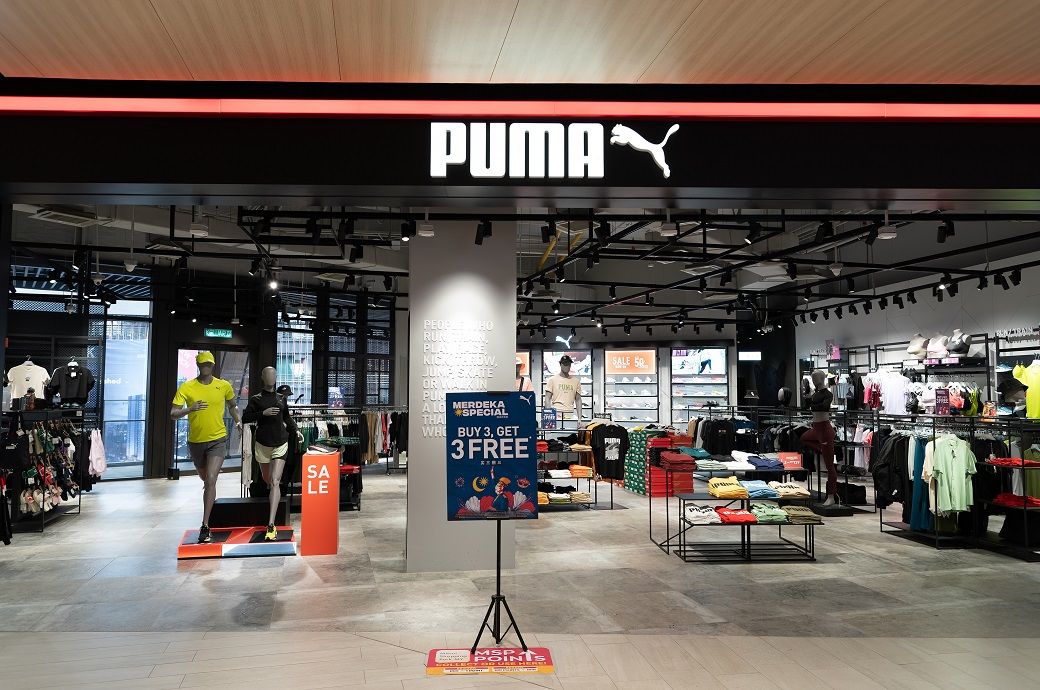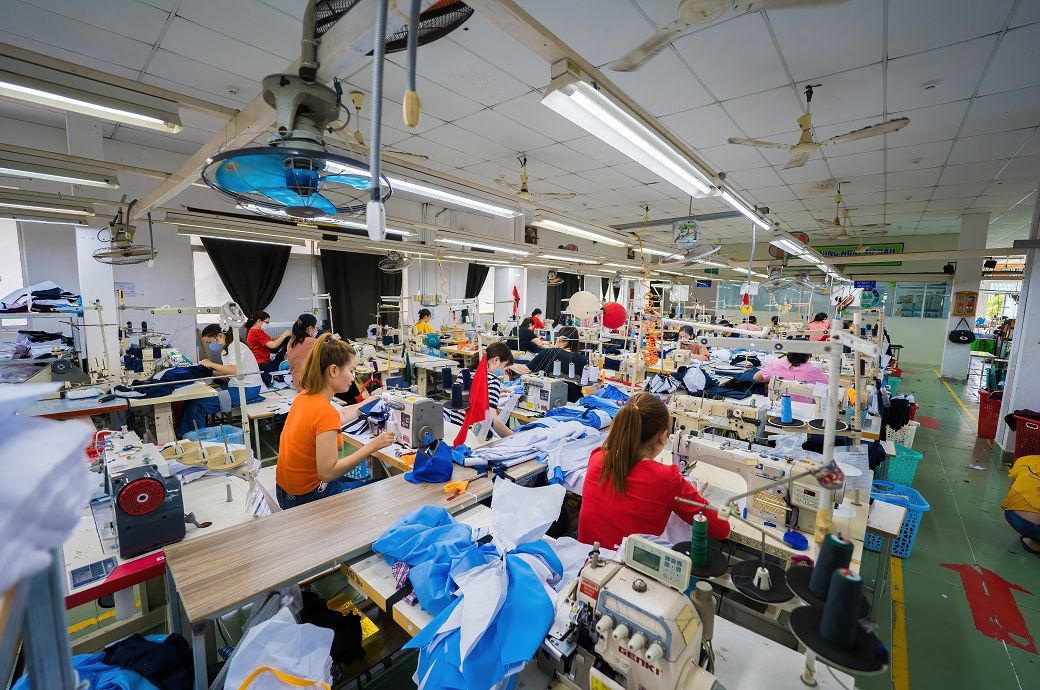Gross profit margin fell 260 basis points to 45.2 percent, primarily due to elevated promotional activity in the wholesale channel, inventory write-downs and higher transportation costs. This was partially cushioned by a favorable mix shift toward direct-to-consumer (DTC).
Puma’s sales in the third quarter of 2025 have decreased 10.4 percent in currency-adjusted terms to €1,955.7 million (~$2.27 billion) amid distribution cleanup, reduced wholesale exposure and fewer e-commerce promotions. The brand reported a net loss of 62.3 million euros (~$72.3 million) and a gross margin of 45.2 percent. CEO Arthur Hoeld reaffirmed that 2025 is a “reset year.”
Operating expenses, excluding extraordinary costs, decreased by 2.6 percent to 850.6 million euros, reflecting the first benefits of the profitability program. However, marketing costs increased as a proportion of sales due to reduced revenue. Adjusted EBIT fell sharply to €39.5 million from €237.0 million a year earlier, while reported EBIT came to €29.4 million after accounting for €10.1 million in extraordinary restructuring costs. Consequently, the EBIT margin fell to 1.5 percent. The net loss stood at 62.3 million euros compared to a net profit of 127.8 million euros in the same period last year. Earnings per share were negative 0.42 euros.
The company faced multiple challenges during the quarter, including weak brand momentum, elevated inventory levels across the trade and lower-quality distribution, as part of its ongoing strategic reset aimed at strengthening long-term brand health by reducing undesirable wholesale business, reducing promotions and improving inventory quality, Puma said in a news release.
Wholesale revenue decreased 15.4 percent (currency adjusted) to €1,385.7 million, reflecting lower exposure to low-margin channels in North America, Europe, the Middle East and Africa (EMEA) and Latin America. The company also phased out unwanted business and executed significant recoveries to remove excess inventory from trading partners.
DTC sales, however, grew 4.5 percent (currency-adjusted) to €570 million, driven by a 5.6 percent increase in e-commerce and a 3.9 percent increase in owned and operated retail stores. This boosted DTC share to 29.1 percent from 25.1 percent in the third quarter of 2024, as the company shifted its focus to higher-margin brand-controlled channels.
Sales fell in all key regions due to the ongoing restart. In the Americas, sales decreased 15.2 percent (adjusted for exchange rates) to 678.1 million euros, largely due to lower exposure to mass merchants in North America. The US market was especially affected given its significant participation in the wholesale business. The Asia/Pacific region recorded a 9 percent decline to €367.1 million, mainly due to a decline in the Greater China wholesale business, partially offset by growth in DTC. In the Europe, Middle East and Africa (EMEA) region, sales decreased by 7.1 percent to €910.6 million, affected by returns and the deliberate reduction of low-quality wholesale business.
All product divisions were affected by the strategic reset. Footwear sales decreased 9.9 percent (adjusted for exchange rates) to 1,045.8 million euros, with widespread weakness in most categories. However, the Speedcat family within the Sportstyle Prime segment performed well, especially in the Asia-Pacific region. Performance categories like basketball and performance running showed resilience, driven by successful launches like the HALI 1 basketball shoe and Velocity NITRO 4 running shoe.
Apparel sales decreased 12.8 percent to €635.5 million, reflecting weaker performance in Sportstyle, while growth in Training, driven by Puma’s exclusive partnership with HYROX, along with Motorsport and Basketball, provided partial offsets. Accessories decreased by 6.1 percent to 274.4 million euros.
For the first nine months of 2025, Puma sales decreased 4.3 percent (currency adjusted) to 5,973.9 million euros, while reported sales fell 8.5 percent. Wholesale trade decreased 8.6 percent, while DTC increased 8.4 percent, driven by strong e-commerce growth of 14.2 percent and retail growth of 5.2 percent. DTC’s share of total sales increased from 25.5 percent to 28.8 percent.
Gross profit margin for the nine months decreased 130 basis points to 46.1 percent due to higher promotions and currency difficulties. Adjusted EBIT fell to €102.0 million from €513.2 million, while extraordinary costs and impairments led to a reported EBIT loss of -€10.7 million. The company recorded a net loss of 308.9 million euros in the period, compared to a profit of 257.1 million euros in 2024.
“At the end of July, we declared that 2025 would be a reset year. Since then, we have taken important steps to clean up Puma’s distribution, improve our cash management and restore our operating expenses. By expanding our cost efficiency program, we are moving quickly to address challenges and make the business more efficient and resilient. With the third quarter results meeting our expectations, we remain committed to executing these measures with discipline,” he said Arthur Hoeld, CEO of Puma.
“I firmly believe that the Puma brand has incredible potential with over 77 years of history, one of the best product archives in the industry and enormous credibility across many major sports. We have identified areas where we need to take decisive action and have outlined our strategic priorities to become a global sports brand with globally impactful product ranges and inspiring storytelling across all markets. With these strategic priorities, we have a clear ambition to establish Puma as a top 3 sports brand globally. globally, returning to industry-beating growth and generating healthy profits in the medium term,” Hoeld added.
Puma has expanded its profitability program to include a targeted reduction of approximately 900 additional management positions globally by the end of 2026. The company expects these actions, along with its distribution restart and focus on brand consistency, to create a more efficient and agile operating structure, the statement added.
Despite the current macroeconomic and geopolitical uncertainty, Puma confirmed its full-year 2025 outlook, expecting sales to decline by a low double-digit percentage on a currency-adjusted basis and a reported EBIT loss for the year. Capital expenditure is expected to be around €250 million.
Fiber2Fashion News Desk (SG)



